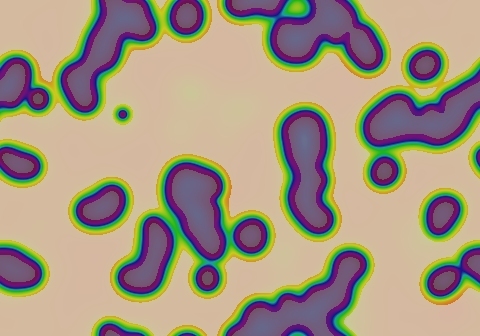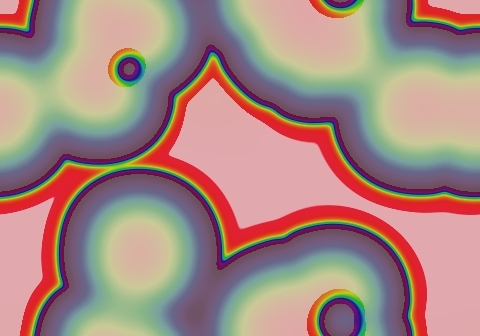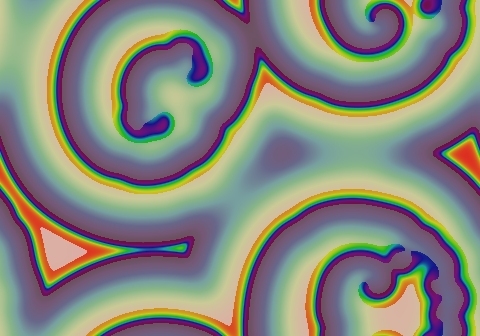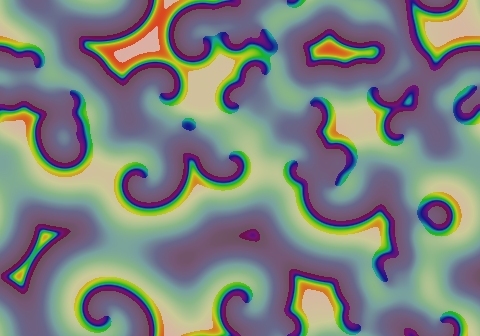Gray-Scott Model at F 0.0100, k 0.0350
These images and movie demonstrate the behavior of the Gray-Scott reaction-diffusion system with σ=Du/Dv=2 and parameters F=0.0100, k=0.0350.
Most starting patterns produce small blue spots and blobs on a red background, which grow with smooth outer edges and slowly decaying trailing edges, mostly annihilating each other as they fill the space. However, as seen here, a few second and third generation waves will arise, and some of these develop into spiral seeds which lead the transformation to a field of spirals similar to those in the B-Z (Belousov-Zhabotinsky) reaction. This pattern continued to produce spirals for at least 27,000,000 tu.
Categories: Munafo ξ; Wolfram 3 (glossary of terms)

 | |||
 decrease k  |


|
15 frames/sec.; each fr. is 22 iter. steps = 11 tu; 1801 fr. total (19,811 tu) |  increase k 
|

|


| ||
 decrease F decrease F
 |
In these images:
- Color indicates level of u, ranging from purple (lowest u values) through blue, aqua, green, yellow and pink/red (highest u values)
- Areas where u is increasing are lightened to a light pastel tone; where u is decreasing the color is vivid.
- In areas where u is changing by less than ±3×10-6 per tu, an intermediate pastel color is seen. This includes areas that are in steady state or equilibrium.
''tu'' is the dimensionless unit of time, and ''lu'' the dimensionless unit of length, implicit in the equations that define the reaction-diffusion model. The grids for these simulations use Δx=1/143 lu and Δt=1/2 tu; the system is 3.2 lu wide. The simulation meets itself at the edges (periodic boundary condition); all images tile seamlessly if used as wallpaper.
Go back to Gray-Scott pattern index
This page was written in the "embarrassingly readable" markup language RHTF, and was last updated on 2019 Jan 05.
 s.11
s.11